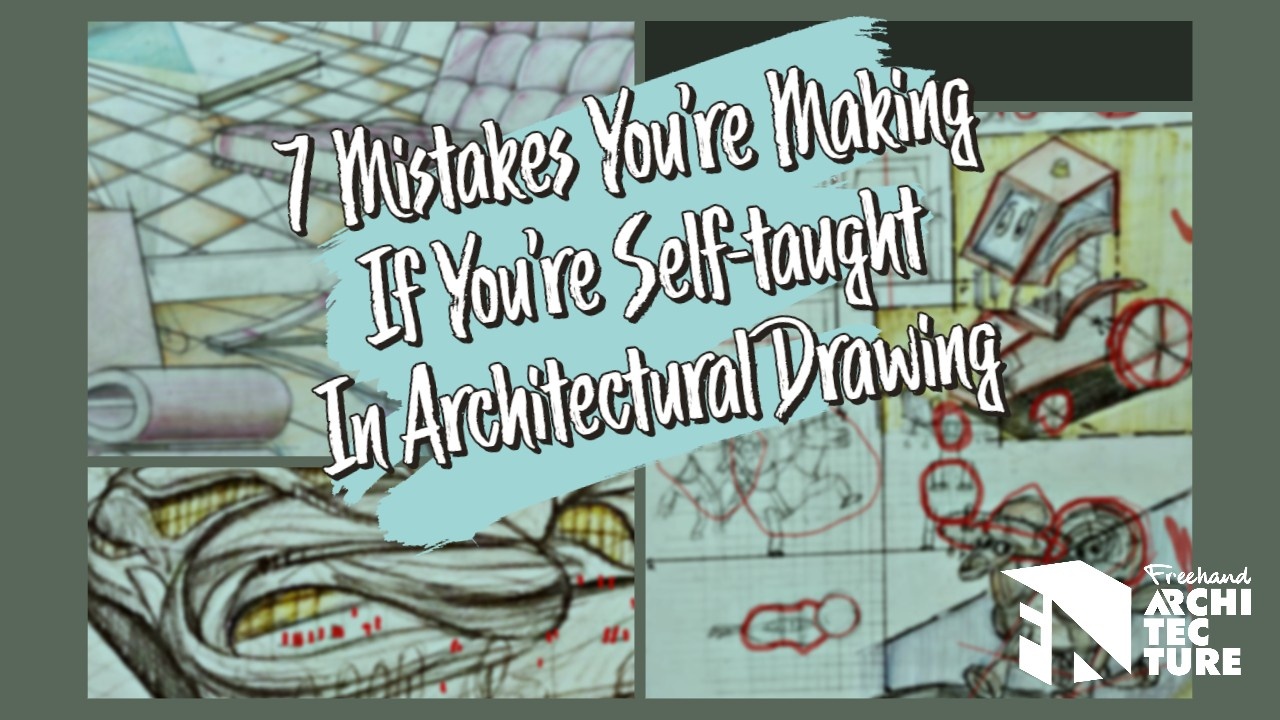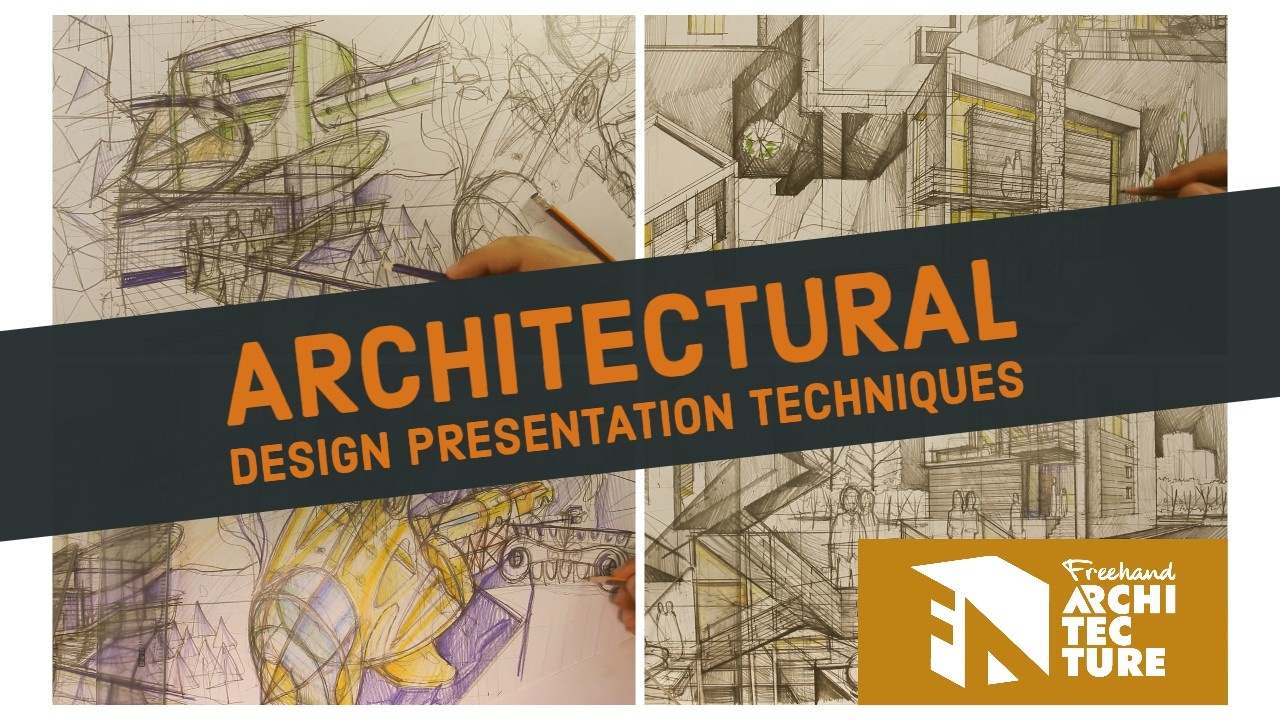Three Perspective Mistakes That Will Haunt You For Life
Sep 12, 2022
I’ve started off with this slightly dramatic quote just to make a point…
In architectural drawing you constantly need to be scanning for ‘patterns’ in your work, to not be doing the same thing over and over again.
Needless to say, patterns will sneak in… and that’s fine, but be on the look out.
Especially be careful for patterns of mistakes (mistakes that seem to pop up again and again).
The absolute worst of these are the infamous perspective mistakes.

Why do you need to know about perspective mistakes?
Perspective mistakes are the most diabolical type of mistake you can be making in your drawing and design work…
That’s because…
a. They involve line drawing – so they’re really hard (if not impossible) to correct. This will have you constantly have to redo your work…
b. Just one perspective mistakes is enough to ruin your whole drawing. As I will further detail in this post, drawing correct perspective is more or less like a light switch… you either get it or you don’t.
c. Perspective mistakes are notoriously hard to spot… You usually see then when it’s too late, by then you have to move to point a.
Introduction To Perspective
Let’s talk about the top three mistakes all beginners make when it comes to understanding perspective.
To be perfectly honest, you have probably been making these mistakes for a while, but no worries after reading this article you will have everything you need to stop yourself from this negative streak of mistakes.
Just this minimum change in perception will better you drawing skills and yeah the good news is that it takes MINIMUM EFFORT on your behalf.

A bit of perspective… on perspective
Perspective is by far the most important skill you got in your freehand architecture drawing toolbox.
How it all works is you first need to get the basics right and then you start drawing more and more complex things.
I’m stressing this out right from the beginning because I’ve noticed most of my students are really enthusiastic about learning drawing and want to just skip the basics altogether so they may get to the interesting parts of the drawing.
I wouldn’t recommend you do that: chances are you will learn something the wrong way and then have to unlearn it (remember, unlearning is twice as complicated as learning – so you’re best off picking it up right from the first time round!).
Get your first box perspectives right and your drawing skills just add up…
In a short amount of time, you will be drawing cool things such as buildings or abstract volumetric compositions, or anything else you would see in an architecture magazine.
Alright?
That’s a fact.
So although drawing has its weird, counter-intuitive, or subjective parts, understanding perspective is a fairly straightforward skill to get. Imagine it like an on/off switch – you either get it or you don’t and there is no middle ground.
Following that rule of thumb, even the smallest perspective mistake compromises your whole work -that’s good news, right?
Obviously, we can choose to be proactive about it, so now let’s talk about the mistakes you’re probably making right now and probably aren’t aware of.
These mistakes limited your drawing abilities so far, so you’re best off doing that bit of introspection.
Activate that inner radar that detects either of the three and let’s unwire them, one by one. I think you’ll find out that it gets a lot easier after you’re done with each of them!

Mistake #1 Not respecting the perspective points rule, so your drawings end up not making sense
The first mistake I’ve noticed all my beginner students do is not following construction points properly, so their drawings are completely off.
The way to correct this is to name both perspective points – I usually go for P1 (perspective point one) and P2 (perspective point two).
This way you will get in the habit of following perspective points and in a short time ( a minimum of five complete drawings) it will become a habit so you won’t need to think about it.

Ouch, this hurts my eyes! Why bother hatching a drawing that’s wrong in the first place? Never mind, B+ for effort! 🙂

If we trace all the construction lines, we can see that the whole drawing is wrong and there’s nothing left to do but start over!
Mistake #2 Not constructing your perspectives
This is the BIG one, it will take a bit more effort on your behalf to get past this as you need to consciously remind yourself to always construct all elements of a drawing.
Over the years I’ve noticed all my students were going through a stage where they want to skip fully constructing every perspective.
That is a really bad idea as a correct line drawing is what makes the final drawing piece look good.
You will encounter the same temptation of not following through with constructing your perspectives – so don’t give in!
Construct every perspective, every time although at this moment you are probably questioning yourself on what’s the point of doing it.
Trust me, this makes the difference between the masters and the amateurs!
Again, it will soon become a habit so you won’t need to worry about it…


Mistake #3 Placing the perspective points too closely together, so your perspectives look deformed
This usually sneaks in after a bit of experience doing simple boxes.
I would imagine you went past your fifth box and now all of a sudden you’re not as enthusiastic about your drawings as they look a bit off and you can’t really tell why.
Nine out of ten times this happens because you got the two perspective points too close together.
The way to fix this is, you need to have one perspective point on your drawing page and one point away, floating mid-air.







